David J. Williams
With permission from the Journal of Audiovisual Media in Medicine, Vol. 22 No. 4, pp 164-170
Abstract
Werner Spalteholz's Handatlas der Anatomie des Menschen is one
of the most elegantly illustrated anatomical atlases of all time. Originally
published in Leipzig as three volumes from 1895-1903, the atlas is still
widely used and remains highly regarded by many. The atlas was remarkably
popular during the first half of the twentieth century, especially the
English version in North America and the United Kingdom. Unfortunately,
the original illustrations and printing plates for the work disappeared
following the Second World War and their fate remains a mystery. And,
in spite of the atlas's popularity, little is known of the men who prepared
the artwork for Spalteholz. It is commonly believed that Max Brödel
contributed illustrations to the atlas, but a close examination of the
work does not confirm this. A century after its inception Spalteholz's
atlas remains a classic milestone in the history of anatomical illustration.
University of Leipzig's Early History
The University of Leipzig is one of the oldest universities in Europe, first recognized in a Bull of Acknowledgment issued by Pope Alexander V in 1409. The Arts Faculty, established when the University was founded, the three higher faculties of Medicine, Law and Divinity, and the other faculties, which eventually emerged from the original four, have enjoyed close to 600 years of virtually uninterrupted teaching and research. Renowned scholars have forged the profile of The University of Leipzig, and their illustrious students have included Lessing, Goethe, Robert Schumann, Richard Wagner, Friedrich Nietzsche, and Carl von Weizsäcker.[1] Leipzig was also the home of Bach, whose tomb is in the often-restored St. Thomas's Church.
The Faculty of Medicine is one of the oldest faculties of The University of Leipzig, and was truly remarkable during the latter half of the nineteenth century. The faculty was established in 1415 with its own dean. Step by step it developed into a center of teaching and research and gained a worldwide reputation. The Faculty of Medicine flourished from the middle of the nineteenth century to the 1920s largely because of its outstanding faculty.[2]
Spalteholz and the Atlas
Werner Spalteholz (Figure 1), the son of a merchant, was born in Dresden on February 27, 1861. Spalteholz's early education was in a private school. He attended the Leiligen Kreuz gymnasium in Dresden from 1873 to 1880 and then studied at The University of Leipzig Medical School from 1880 to 1885, receiving his approbation in medicine in February 1885. In April of the same year, after demonstrating a strong aptitude for anatomy, he was made an assistant in the Anatomy Institute of The University of Leipzig. On March 27, 1886, he received his doctor of medicine degree. Five years later, in 1891, Spalteholz joined the faculty of The University of Leipzig as a dozent (lecturer), and by 1892 was a full professor of medicine and was the curator of the anatomical collection.[3,4]
Spalteholz had the good fortune at The University of Leipzig to be surrounded by outstanding colleagues who were leading pioneers in their respective fields. Chief among them was Carl Ludwig. Born in Witzenhausen, Germany, in 1816, Ludwig was a member of the medical faculties at Zurich and Vienna before becoming the director of the Physiology Institute and professor of physiology at The University of Leipzig in 1865.[4] Interestingly, it was Ludwig who gave Max Brödel his first assignment in medical illustration while Brödel was an 18-year-old student at the Art Academy in Leipzig. Brödel went on to forge a remarkable career in medical illustration at The Johns Hopkins University in Baltimore.[5]
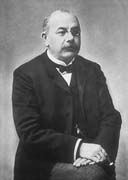
Figure 1. Werner Spalteholz (1861-1940) as a young anatomist at the Anatomy
Institute at The University of Leipzig. (Bildersammlung des Karl-Sudhoff-Institut
für Geschichte der Medizin und der Naturwissenschaften, Universität
Leipzig).
Wilhelm His, another of Spalteholz's colleagues at Leipzig, is credited with being a founder of human embryology. In 1865 he introduced the microtome into microscopic research, thus making possible the cutting of serial sections. It was His who supported and collaborated with Spalteholz throughout his work on the atlas and who wrote the preface to the first German edition.[4]
The printing history of Spalteholz's original German edition of Handatlas der Anatomie des Menschen includes 14 editions, beginning with the first edition published in 1895 to 1900. The 14th German edition was published in 1939-40. All of these editions were published in three volumes by S. Hirzel Verlag in Leipzig. The books were actually printed by Fischer & Wittig in Leipzig, which did not survive the Second World War.
Major Contributing Artists
Apparently several artists contributed to the 935 illustrations that are found in the original German edition of Spalteholz's atlas. At this point, no one knows who they all were, but the major contributor was Bruno Héroux. Héroux was born in Leipzig on December 20, 1868, the descendent of a French refugee. Héroux's father was a wood engraver so he came by his talent naturally.
 Figure 2. Bruno Héroux (1868-1944), the main artistic contributor to Spalteholz's atlas. (Illustrierte Wochenzeitschrift, "Der
Leipziger," Heft 25).
Figure 2. Bruno Héroux (1868-1944), the main artistic contributor to Spalteholz's atlas. (Illustrierte Wochenzeitschrift, "Der
Leipziger," Heft 25).
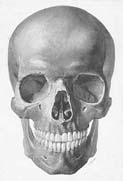
Figure 3. Tone painting of the skull, viewed from in front, by Bruno Héroux.
(Spalteholz: Hand-Atlas of Human Anatomy, Second English Edition,
Vol. I, J.B. Lippincott Company, 1906).
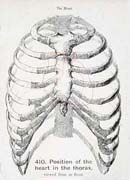
Figure 4. Pen and ink drawing of the position of the heart in the thorax by
Bruno Héroux. (Spalteholz: Hand-Atlas of Human Anatomy,
Second English Edition, Vol. II, J.B. Lippincott Company, 1906).
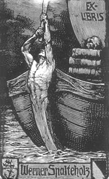
Figure 5. Ex libris, done in woodcut by Bruno Héroux for Werner Spalteholz.
The figure holds the torch of knowledge lighting the darkness. The book
and skull denote Spalteholz's occupation. (Braungart: 101 Ex Libris
von Bruno Héroux, Leipzig, 191715).
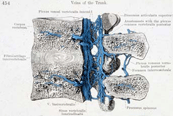
Figure 6. Pen and ink illustration of the spinal veins by Unger (initialed E.H.U.).
(Spalteholz: Hand-Atlas of Human Anatomy, Second English Edition,
Vol. II, J.B. Lippincott Company, 1906).
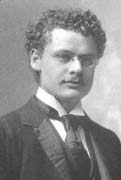
Figure 7. Max Brödel (1870-1941) in 1895, the year of publication of the
first volume of Spalteholz's atlas in Leipzig. (Brödel Archives,
Department of Art as Applied to Medicine, The Johns Hopkins University
School of Medicine).
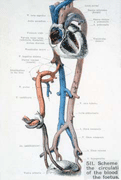
Figure 8. Scheme of the circulation of the blood in the fetus. Could this pen
and ink drawing be an early work by Max Brödel? The artist's initials may be depicted in a close-up of the illustration seen below. (Spalteholz: Hand-Atlas of
Human Anatomy, Second English Edition, Vol. II, J.B. Lippincott Company,
1906).
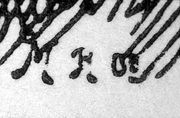
Figure 9. Enlargement of a possible signature (?) on the illustration of the
scheme of the circulation of the blood in the fetus from Spalteholz's
atlas. (Spalteholz: Hand-Atlas of Human Anatomy, Second English
Edition, Vol. II, J.B. Lippincott Company, 1906).
Héroux studied at the famous Königliche Kunstakademie und Kunstgewerbeschule in Leipzig. The Kunstakademie is an old academy of fine art, founded in 1764. The Kunstgewerbeschule, a more technically oriented school of applied art, was established more than a century later, in 1875. From 1875 until 1900 they were two distinctly different educational institutions that shared the same building in Leipzig and the same director. In 1900 the Kunstgewerbeschule became an independent school with its own director and was renamed the Leipziger Akademie für graphische Künste und Buchgewerbe. At first Héroux studied in the evening classes of the Kunstgewerbeschule, and then at the Kunstakademie itself from 1886 to 1892. He then taught at the Leipziger Akademie für graphische Künste und Buchgewerbe from 1903 until his death on February 14, 1944. There he was the director of the courses on etching. He achieved the status of professor (Figure 2) at this institution, no small distinction, but the exact year is unknown.
Héroux's work for Spalteholz's atlas lasted more than eight years. He prepared between 600 to 700 illustrations in all. All of his black and white tone illustrations (Figure 3) are lampblack watercolor wash paintings. His ink drawings are equally impressive (Figure 4) and reflect his training in etching and engraving. Heroux had no formal training in medical or anatomical illustration. Nor is it known how he came to do this work for Spalteholz. Perhaps, like Carl Ludwig, Spalteholz contacted the art school in Leipzig for a recommendation and Héroux was selected.
Other than his work for Spalteholz, the only other anatomical illustration done by Héroux is the work he did for Professor Reinhold Schmaltz's Atlas der Anatomie des Pferdes, published in Berlin in 1924 by the Verlag Richard Schoetz. Much of his career was spent illustrating books with etchings, such as Goethe's Faust. Héroux's main body of work is a vast collection of ex libris art (Figure 5). In addition to etching, Héroux also worked in lithography and wood engraving.[6,7] We can only speculate what his contribution would have been if he had made medical illustration his life's work.
Another artist who contributed to the Spalteholz atlas was Unger. Spalteholz refers to him as H. Unger in the epilogue in the third volume of the original German edition.[8] Most of his illustrations for Spalteholz are signed with the initials "H.U.", but a few of the illustrations in the atlas are signed "E.H.U." (Figure 6). Unger is a very popular name in Germany. Helma Schaefer, the chief reference librarian at the Deutsche Bücherei Leipzig, in personal communication (June 7, 1998) wrote that, "The artist Hans Unger, born August 26, 1872 and died August 13, 1936, was a painter and graphic artist who studied at the Leipziger Königliche Kunstakademie und Kunstgewerbeschule." Schaefer continued, "Hans E. Unger, born 1915, was a painter and poster artist, and was in London in 1948." Julia Blume, the archivist for the Leipziger Akademie für graphische Künste und Buchgewerbe, in personal communication (July 22, 1998) stated, "We don't know whether H. and E.H. Unger are the same man." She did confirm that, "H. Unger was also a student of the Kunstakademie in Leipzig at the same time as Héroux. Before this, both of them attended the evening classes at the vocational school [Kunstgwebeschule] in Leipzig as preparation for their later studies at the Academy [Kunstakademie]." To further complicate matters, the grand catalog of the Kunstakademie in Leipzig, dated December 1890, lists as students Max Brödel, Hermann Becker, August Horn, Bruno Héroux-all who went on to become medical artists-and a Hugo Unger from Crottendorf. Anger-Crottendorf is a municipal district of Leipzig.
Brödel, in a published tribute to August Horn, referred to him only as Unger. "They [Unger] were all Leipzig men, brought up in an art school, where drawing and painting were supplemented by splendid training in the graphic arts (lithography, wood engraving, etching, engraving on copper, etc.). In this manner there was acquired, besides a solid draughtsmanship equal to that of many well-known painters, a perfect technique requisite to representations of minute and exact conditions as demanded in medical work."[9]
Whatever his first name, Unger's work for Spalteholz includes delicate pen and ink line drawings and tone wash paintings similar in style to Héroux's paintings. Since most of the illustrations in the atlas are unsigned it is difficult to distinguish the two artists' work.
The only other artist who is known to have contributed to Spalteholz's atlas is Albert Fiebiger, who contributed 19 figures of the brain in the third volume.[8] Fiebiger was a German illustrator and draftsman. He was born in Dresden on August 30, 1869. Following his studies in Dresden he worked for the Munich periodical, Jugend. How he came to work for Spalteholz is unknown.
Max Brödel's Contribution?
One of the more intriguing assumptions regarding Spalteholz's work is that Max Brödel (1870-1941) contributed to the atlas (Figure 7). McLarty observed that Max Brödel "in 1894, having worked on the illustrations of the anatomy books of Spalteholz and Braune, went to America with the intention of concentrating on the drawing of medical illustrations."[10] Roberts and Tomlinson claim that Brödel "worked in physiology for the great Carl Ludwig, and in anatomy for both Wilhelm His sr. and the young Spalteholz."[11] Thornton and Reeves wrote that "Brödel also made anatomical drawings for Christian Wilhelm Braune and Karl Werner Spalteholz, and while still in Leipzig he first heard of the Johns Hopkins Medical School in Baltimore."[12] Archer wrote that "he [Brödel] worked at the Anatomical Institute for Wilhelm His (the elder), Braune the embryologist and Spalteholz, who was compiling his famous atlas."[13]
That Brödel prepared drawings for Ludwig and Braune is true, as verified by Crosby and Cody. They quote Brödel as writing, "The following summer (1889) I made about 15 drawings of the heart for professor Ludwig and Dr. Krehl, and several large topographical drawings for Prof. Wilh. Braune of the Anatomical Institute."[5] However, in personal communication (Crosby May 20, 1998; Cody May 22, 1998), both authors expressed strongly that Brödel did not prepare any drawings for Spalteholz, especially any that appeared in the atlas. His ego would not have kept him from boasting about this if he had. Crosby pointed out further, "Surely he [Brödel] would have written about Héroux's vast project if he had been in touch with him or participated in the publication. As I said, I tend to think it is not so."
However, a close look at the pen and ink illustration of the scheme of the circulation of the blood in the fetus from the second volume of Spalteholz's atlas reveals line technique remarkably similar to Brödel's early work (Figure 8). In addition, the initials in the lower right hand portion of the illustration, which are nearly impossible to see in the reproduction in the atlas, are revealing (Figure 9). They appear to be a letter "M," then a broken letter which could be a "B" but looks more like an "H" (Heinrich was part of Brödel's full name), followed by what appears to be an "oe." There is no reason why Brödel would anglicize his name by omitting the umlaut in his family name in favor of the letter "e." Perhaps this is nothing but confirmation that other artists besides Héroux and Unger contributed to the atlas. But could it be an indication that at least one of Brödel's drawings found its way into the atlas?
English Translation
Undoubtedly the translation of Spalteholz's atlas into English and its subsequent publication and marketing by the J.B. Lippincott Company was instrumental to its astounding success. Lippincott exposed the atlas to the North American and United Kingdom markets, where it quickly became a favorite of physicians and medical students.
The atlas was translated into English by Lewellys Franklin Barker (Figure 10). Born in Norwich, Ontario, in 1867, Barker received his medical degree at The University of Toronto in 1890. Following this, he lived for nine years in the Johns Hopkins Hospital, working first under Professor William Osler's service and later taught anatomy with Professor Franklin Mall and pathology with Professor William Welch. Barker also spent a year and a half in Germany studying at the Universities of Leipzig, Munich and Berlin. He was awarded an honorary doctor of laws from The University of Glasgow in 1930.
As to his work in Leipzig, Barker wrote, "In the spring of 1895....I went to Europe for six months' study in Leipzig....I entered Ludwig's physiological laboratory for some research work, but I also attended his lectures on embryology, Wundt's lectures on psychology, and Flechsig's lectures on the anatomy of the brain."[14] More importantly, he also interacted with Werner Spalteholz. The first volume of Spalteholz's three-volume atlas was published during Barker's visit to Leipzig.
Barker returned to Johns Hopkins where he was an associate professor of anatomy and pathology until 1900. Early in June of that year he accepted an offer of a full professorship in anatomy at The University of Chicago, where he held the chair for the next five years. It was during this period that he translated the three volumes of Spalteholz's beautiful atlas-no small task-and this was published by J.B. Lippincott and Company, though the English text was set up and printed by S. Hirzel in Leipzig. In 1942 Barker wrote of this work, "Of the several books with which my name is connected, these volumes have had the largest sale. The Hand Atlas has been in steady demand since publication, though recently there have been difficulties in importing the English edition from Germany and it has been necessary to reproduce it in this country by a photostat process."[14] This means that negatives of the black screen were created directly from the printed images with a photostat camera, which were then converted into metal plates for printing. From this point on the quality of the printed illustrations was never the same.
Roberts and Tomlinson observe that the illustrations in Spalteholz are lithographs, or were reproduced by offset lithography.[11] In reality, originating with the first German edition, the printed illustrations have always been early examples of relief halftone.
After the War
What was the fate of Spalteholz's work? What happened to the beautiful lamp black wash drawings by Héroux and Unger? Perhaps a clue lies in the fact that the Anatomy Institute in Leipzig was largely destroyed during the Second World War (Figure 11). Prof. Dr. Katharina Spanel, the current director of the Institute for Anatomy in Leipzig, wrote in a personal communication (January 8, 1998) that "the [Spalteholz] material was destroyed on December 4, 1943, when the Allies bombed Leipzig during World War II. The Institute of Anatomy was ruined and rebuilt during the years 1953-1956."
A popular rumor in North America following the Second World War was that the printing plates for Spalteholz's atlas were aboard a ship en route to America that was sunk by a German U-boat. In reality, it is unlikely physical printing plates would have been sent from Germany to the United States. Rather, printed sheets would have been sent for overprinting with the English labels and text. It would have been those materials, and not the plates, that would have been sunk. It is far more likely the plates perished in the Allied bombing of Leipzig during the war, which badly damaged the old part of the city. Before the war the primacy of Leipzig in the publishing and printing trades was unchallenged, with more than 400 publishing firms being located in the city. Fewer than 40 of those concerns survived under the Communist regime. The former publisher, S. Hirzel, relocated to Stuttgart following the war and turned over all rights and material still available to Scheltema & Holkema NV, Vermeulen in Amsterdam in 1957. The atlas, under the title Spalteholz-Spanner, is still marketed by Bohn Stasleu in the Netherlands.
Conclusion
Spalteholz's atlas had an enthusiastic reception immediately upon its publication, and this was further enhanced by its translation into English. It quickly became a favorite all over the world. Spalteholz's reputation was such that he was awarded an honorary degree from The University of Wisconsin in 1905. He was also offered the chair in anatomy at The University of Tulane, but he declined. He died in Leipzig on January 12, 1940 (Figure 12).

Figure 10. Lewellys Barker (1867-1943), who translated Spalteholz's atlas into
English. (The Alan Mason Chesney Medical Archives of The Johns Hopkins
Medical Institutions).

Figure 11. The bombed Anatomy Institute at The University of Leipzig in 1943.
(Universitätsarchiv Leipzig).
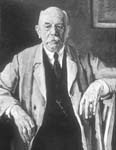
Figure 12. Oil portrait of Werner Spalteholz painted by Georg Preller for Spalteholz's
70th birthday in 1931. The painting hangs in the new Anatomy Institute
in Leipzig. (Bildersammlung des Karl-Sudhoff-Institut für Geschichte
der Medizin und der Naturwissenschaften, Universität Leipzig).
References
1. Schulte V. Theoria cum Praxi-University of Leipzig-History. Pressestelle der Universität Leipzig: http://www.uni-leipzig.de/cumpraxi/geschpr.htm, April 1997. Accessed 1998.
2. Adams B. The Faculty of Medicine. Pressestelle der Universität Leipzig: http:www.uni-leipzig.de/medizin/indexe.htm, April 1997. Accessed 1998.
3. Fischer I. Biographisches Lexicon der hervorragenden Ärzte der letzten fünfzig Jahre, Zweiter Band. Berlin-Wien: Urban & Schwarzenberg, 1933.
4. Kästner I, Thom A. 575 Jahre Medizinische Fakultät der Universität Leipzig. Leipzig: Johann Ambrosius Barth, 1990.
5. Crosby RW, Cody J. Max Brödel: The Man Who Put Art Into Medicine. New York: Springer-Verlag, 1991.
6. Thieme U, Becker F. Kunstlerlexicon. Leipzig: E.A. Seemann, 1928.
7. Vollmer H. Kunstlerlexicon des Zwanzigsten Jahrhunderts, Leipzig: E.A. Seemann, 1955.
8. Spalteholz W. Handatlas der Anatomie des Menschen, Dritter Band. Leipzig: S. Hirzel Verlag, 1903.
9. Brödel M. In memoriam: August Horn. Johns Hopkins Hosp Bull 1911; 22: 3.
10. McLarty MC. Illustrating Medicine and Surgery. Baltimore: Williams and Wilkins, 1960.
11. Roberts KB, Tomlinson JDW. The Fabric of the Body, European Traditions of Anatomical Illustration. Oxford: Oxford University Press, 1992.
12. Thornton JL, Reeves C. Medical Book Illustration. Cambridge: Oleander Press, 1983.
13. Archer P. From the beginning: an historical review of medical art. J Audiov Media Med 1989; 12: 51-62.
14. Barker LF. Time and the Physician. New York: G.P. Putnam's Sons, 1942.
15. Braungart R. 101 Ex Libris von Bruno Héroux. Leipzig: Self published, 1917.
Acknowledgments
The author expresses special thanks to Ed Jones for providing a copy of his unpublished paper, "Bruno Héroux-Graphic Artist," completed in 1974. It is an excellent study of Héroux's non-medical art. Julia Blume, archivist for the Leipziger Akademie für graphische Künste und Buchgewerbe, was instrumental in providing photocopies of material on Héroux and clarifying the history of the various art academies in Leipzig. Dr. Natalja Decker of the Karl-Sudhoff-Institut für Geschichte der Medizin und der Naturwissenschaften, Universität Leipzig, and Dr. Gerald Wiemars, director of the Universitätsarchiv Leipzig, were extremely helpful in providing information and visual material regarding Werner Spalteholz. Professor Emerita Ranice Crosby, an authority on Max Brödel and his work, essentially debunked the myth that Brödel had illustrated Spalteholz's atlas. A slightly longer version of this paper was presented at the 50th Anniversary Conference of the Medical Artists' Association of Great Britain, Exeter College, Oxford University, April 9, 1999.
Williams DJ. The History of Werner Spalteholz's Handatlas der Anatomie des Menschen, J. Audiov Media Med, 1999; 22: 164-170.
http://www.tandf.co.uk/journals/titles/0140511X.html
http://taylorandfrancis.metapress.com/link.asp?id=9apapjmx0qfq32k6
David J. Williams is Professor and Director of Medical Illustration and Communications at Purdue University.
G226 Lynn Hall, Purdue University, West Lafayette, Indiana 47907-1245,
USA.
Tel: 765 494-1156; Fax: 765 494-6197; E-mail: djw@purdue.edu